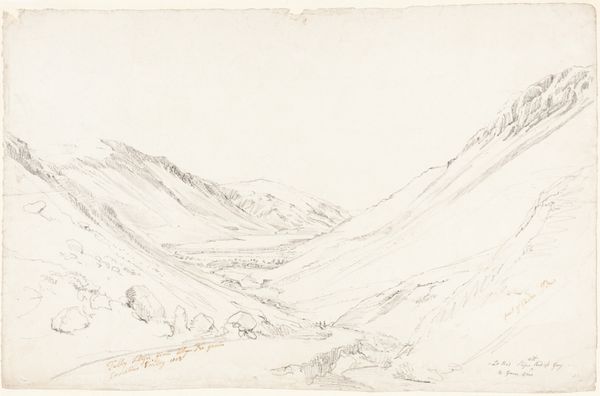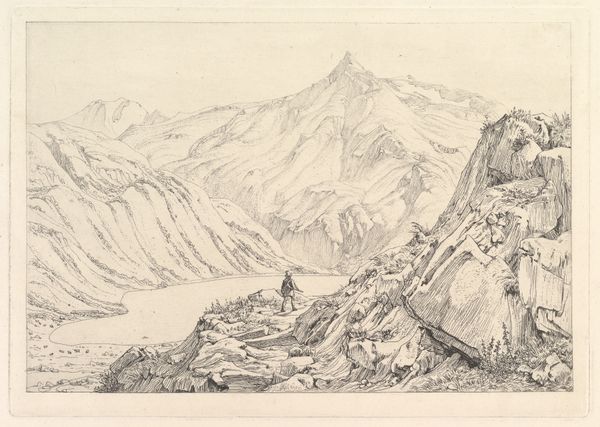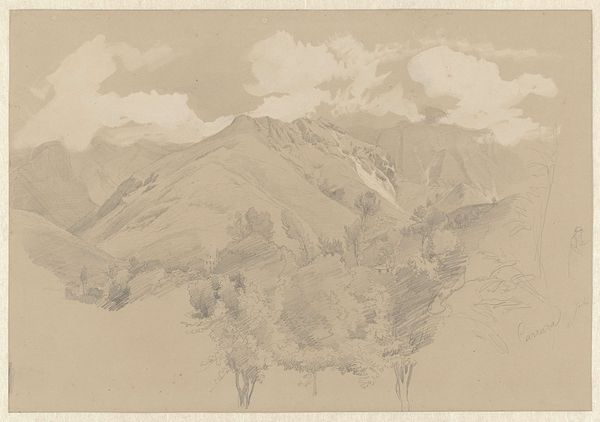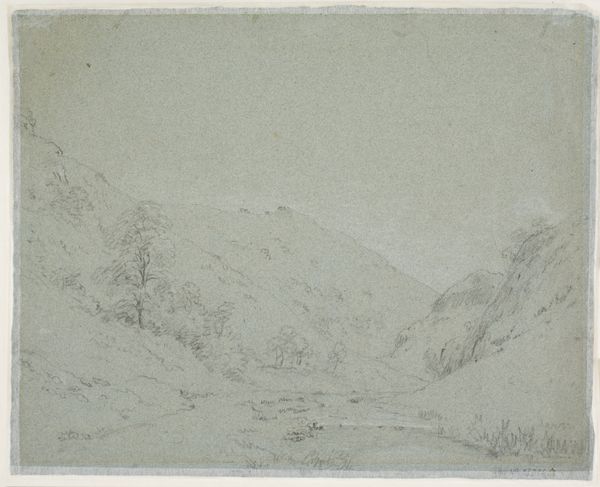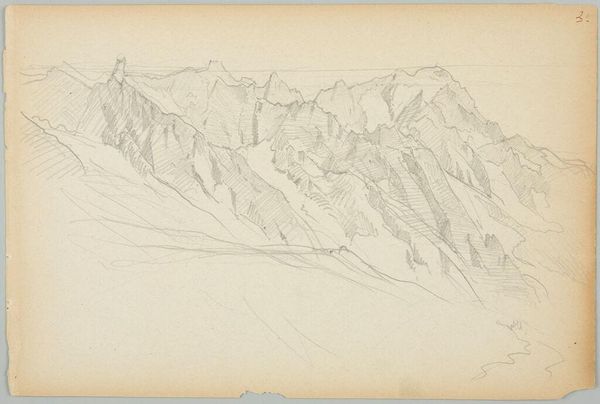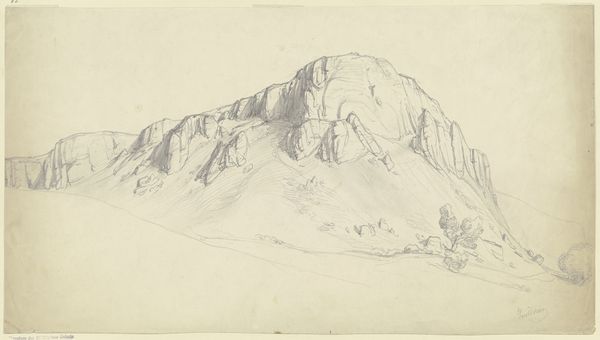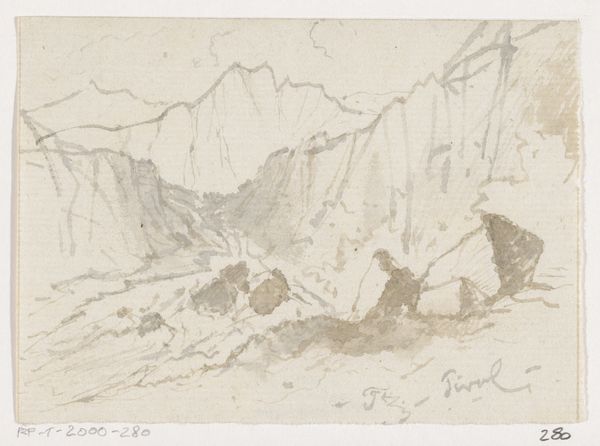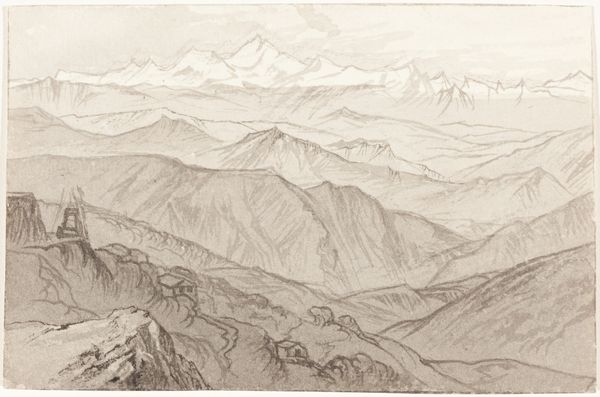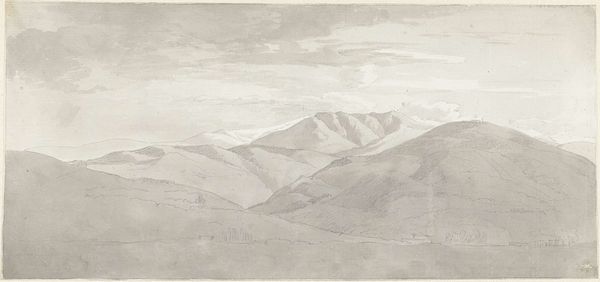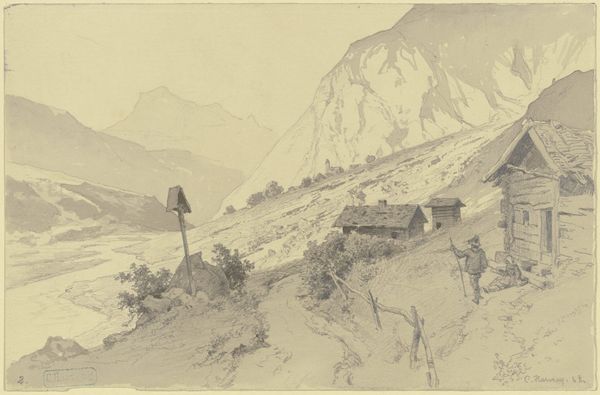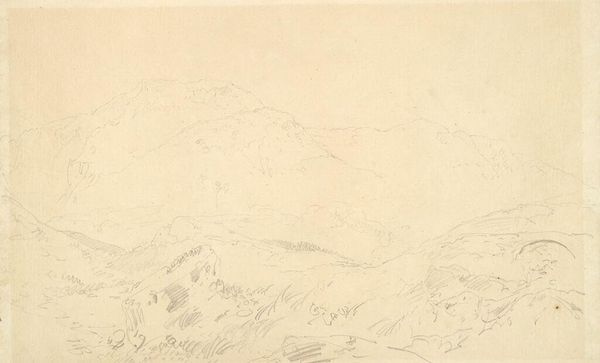
Copyright: Public Domain
Fritz Bamberger made this pencil drawing of Partenkirchen, a town in Bavaria, Germany, sometime in the mid-19th century. During this period, landscape art often reflected cultural and nationalistic sentiments. Artists like Bamberger were vital in visually defining regions, contributing to a sense of regional identity and pride amidst the political landscape of a fragmented Germany. Bamberger’s choice to depict the mountains is telling; mountains often symbolize strength, resilience, and the sublime power of nature. But consider what is not shown here, the people and the culture. What would it mean to consider the people, the farmers, the villagers who lived in relationship to these peaks? Is this a drawing of nature or a drawing of the artist's vision of nature? Ultimately, Bamberger’s "Partenkirchen" is not just a landscape but an invitation to consider the relationship between place, identity, and artistic vision. It encourages us to think about how artists shape our perceptions of the world and how those perceptions, in turn, reflect broader cultural and political contexts.
Comments
No comments
Be the first to comment and join the conversation on the ultimate creative platform.

